Khen-Rho in the world of supercell
The information below presents the dynamics of Khen-Rho as most characters in the comic understand it, not as a complete description of how the system works.
Khen-Rho in nature

In the language of the people of Rhonum, Khen-Rho (alternatively Rho-da Khen) is translated as "the breath of god." It is believed to be the vital cosmic energy that Rho used to breathe life into the world. An indeterminate energy field that seems to have no physical form, and yet permeates itself in and around all things.
One of the defining qualities of Khen-Rho is its ability to exist just outside of the laws of physics, and recodify how they work. Most of the time, the world at large is left to its own devices, but there are a few key areas where it makes itself known. The most obvious manifestation comes in the form of the leading species' Scrambled Phenotype. As a new life develops, the ambient chaos of the breath warps and toys with the genetic foundation of the future lifeform, giving it a distinct and unique blueprint. However, like all physical forces, it seems to obey certain rules.
Khen-Rho will shy away from messing with certain components of the species. Specifically the traits that would make it impossible to survive and thrive. A child may be born who can live in water due to the presence of gills, but a child that NEEDS to be in water to survive is extremely rare, as that would likely result in their swift demise. (Note: This passage was originally in the Species page but was moved here so the former could be updated, more detailed description)
The leading species aren't the only ones who experience phenotypical variety. "Animals" do as well, though in much subtler ways. The one universal constant across all life forms, is that the brain seems to be largely unaffected by Khen-Rho except to ensure it can operate in whatever body type and scale it happens to be housed in.
Nebu-Khen
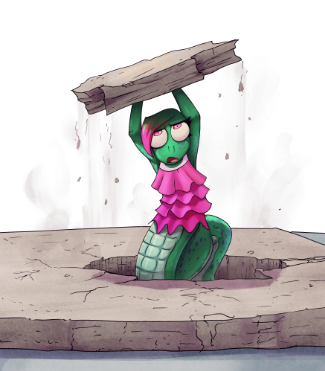
Another important aspect of Khen-Rho is its potential to interact with sentient life. Normally, said interactions involve deliberate tools and rituals that allow people to harness its power. But there are some instances in which some people will exhibit Khen-Rho abilities without the need for such tools.
When an individual is put in a situation where their survival hinges on a miracle, especially during early childhood, there is a slight possibility that one will actually happen, and that that person will gain a single supernatural ability that will get them out of trouble. If someone fell from a building they might gain the ability to fly, or cap their terminal velocity to a safe margin so they can't take fall damage, or become really bouncy or goopey so they can absorb the impact. These powers are known as Crutches, or Nebu-Khen (more or less translated as assisted breathing), a single tool that became available to someone to help them through a rough situation, not unlike an actual crutch. This does mean that in the vast majority of cases, Nebu-Khen are defensive. So, while some may end up having other, more destructive uses (like Tazho's wings), their primary function will always be geared towards self-preservation.
They also aren't exclusive to life-threatening situations; children experiencing prolonged trauma may also gain a Nebu-Khen. In cases such as a deep sense of dysphoria, where a child feels like they were born wrong or incomplete, nebu-Khen may just give them that extra feature that allows them to achieve some semblance of stability or wholeness before their situations really go south.
One caveat is that nebu-Khen cannot be forced on people because it is neither consistent or predictable. If someone were to throw a hundred children out of a plane, maybe one or two would develop one, and even then there is no way to predict or control what the crutch would be. Attempting to farm children with super powers, or putting one's self in danger to try and get one is not only unethical, but futile.
Harnessed Khen-Rho
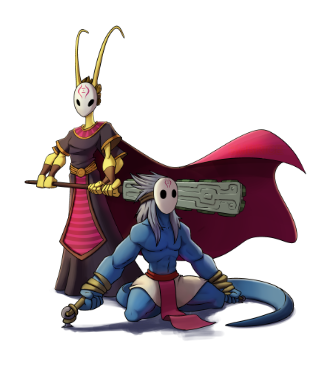
Unlike forces such as gravity, magnetism, thermo-dynamics and the like, Khen-Rho is a force that can be directly tapped into to affect all the others— at a cost. As Khen-Rho is the source of all life, life itself is the price to pay to access it.
Because of this, Rhonum's early practicioners were uncommon, with most Khen-Rho being performed by high priests through ritual sacrifice, at times of great and immediate needs, such as protecting villages from imminent natural disasters. Brutal attitudes developed as demand for magical intervention meshed with the realization that captured enemies served just as well as a willing and voluntary sacrifices.
For reasons that academics have not discerned, sacrificing animals, even ones with observed higher functioning brains, doesn't seem to cause anything to happen.
Later scholars would discover that when vast amounts of power are unneeded, an offering of blood was often enough to perform smaller tasks. Further discoveries and advancements on what they were able to do and what tools would help them maximize their options at a lesser cost meant that Khen-Rho users became more common, and extended outside of the priest class.
Capabilities and Limitations
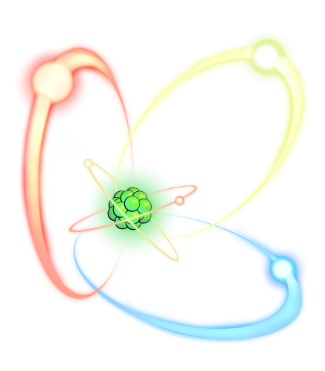
The mechanics of Khen-Rho, while magical, are disctinctly based on physics and not wishfulness. People harnessing it can use it to alter temperature, redirect light rays or disable gravity, but not to talk with animals, brew a love potion, travel through time, or wish away their own waste when plumbing isn't available!
Notably, it is restricted by the same rules as natural Khen-Rho in that directly affecting someone's mind, their sense of self, their memories, etc, is out of the question. This isn't to say that the brain can't be affected by physical forces being applied to it via Khen-Rho, but it does mean anyone short of a highly quallfied brain surgeon should be poking around in there.
Khen-Rho is also limited as an energy source due to its inefficiency. With a colossal entropy quotient, using Khen-rho requires a ton of energy, even for relatively innocuous tasks. Thankfully, that is all largely accounted for by its fuel source, but while it is very convenient, the practice isn't exactly known for preventing diminishing returns. The amount of energy necessary for the theoretical goal of rearranging the molecular structure of an element to turn it into another element is comparable to that of conventional nuclear fusion.
Additionally, Khen-rho instances respond to only single commands at the time rather than serve multiple purposes. Someone may thaw a packet of frozen food OR chop up veggies, but not both at the same time. Such a goal would require either task switching, or using different rings, one for each job.
Of course, sufficiently competent users may find ways of accomplishing things in a way that appears as though they're multi-tasking, but in reality they're just taking a less obvious route to achieve the same ends.
Tools of the Trade
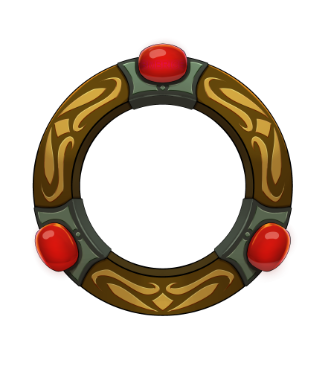
Before tools were developed to effectively channel Khen-Rho, the explosive energy summoned from sacrifices was so dangerous that only exceptionally skilled specialists were able to perform it. Scholars have since discovered ways to automatically direct that energy in a safe way, allowing them to focus on the task at hand.
A blood circle, carefully and proportionately drawn, provides a constant vector for Khen-Rho energy to travel in a contained space and be more easily controled. But because the energy generated is so volatile, it can easily break out of a mere drawing unless properly directed by a displined user. Over the years, better rings were crafted of stronger materials like stone and metal, with an internal duct that allows the blood, and thus the energy to flow. But while this expanded applications tremendously, ring production still required the precision of traditional rituals for a long time. A ring of poor materials and craftsmanship is likely to fizzle or explode.
Whille fluid, unaltered blood still functions as a fuel source, the modern rings are generally powered by zo-ruoka (lit. blood stones). These are made by mixing an amount of blood with another substance, usually sand or carbon that can be glassed together. The resulting "stone" preserves the blood like an insect in amber. The stones fit neatly in the socket of a ring, allowing for quick and simple refueling as power is consumed.
While this enabled fuel to be stockpiled and rings to be easily resupplied, it incentivized a culture where people's blood could be monetized, with all that that implies.
Command and Mastery

A big component of Khen-Rho ability comes from how well the user is able to keep focused and exercise their will on the enegy present, but that alone isn't a catch-all solution to every situation. There is no such thing as a Khen-Rho master, only a master of what they can specifically do with it. A person's ability to achieve their goals through Khen-Rho is directly tied their understanding of their goals and how to achieve them.
For instance, in order to freeze water, it isn't enough to try and will coldness into the water. The user needs to be familiar with the idea that cold is the absence of heat and therefore in order to freeze something, they must remove heat, not add cold. As such, a deeper academic understanding of thermodynamics will allow a practitioner much more reliable results.
In a more practical setting, a sculptor, intimately knowledgeable about the nature of clay, will be able to push and pull moisture around to harden or soften different areas of their project. But someone who just knows that clay is muddy water, will more than likely mangle the entire thing by blinking in its general direction. Needless to say, non-surgeons should not be trusted to try and mend broken bones or repair muscular tissue. Khen-Rho is not an individual's ticket to success, it is a tool that enhances the mastery that is already there.
It should go without saying that practice of the craft isn't exactly accessible, nor is it intuitive. Even someone who is particularly well trained can easily bring disaster on themselves just by making an incorrect assumption while trying to tell the energy what to do, Kheil.
General profficiency with Khen-Rho can be described as a phantom limb reaching out to wrestle the laws of physics into doing something they normally wouldn't. And like physical muscles, the more they are used, the stronger they get. Frequent, well practiced users will find that at a certain point, their figurative phantom limb allows them to "pick up" their rings telekinetically. It's considered a bit of a flex, since it requires practice and dexterity on par with dedicated athletes. The really skilled can hover two rings simultaneously, and people hovering three are considered nothing short of prodigies, as they are exceptionally rare.
Hovering a ring does have a down side, however. Rings are slaves to the last person to physically exercise their will on them, meaning they cannot be telekinetically stolen. But it does mean that if a foe were to snatch a ring out of the air, the ring now becomes theirs.
While most people find awe in the performance of hovering rings, there is a much rarer skill that, while not as visually impressive, is much more difficult. Among those who have devoted their lives to the study of Khen-Rho like monks and gurus, there are some who have such a deep understanding of their craft that they can give commands to a zo-ruoka well before it even reaches the socket of a ring. This allows even an untrained individual perform a given task without the presence of a professional.
Kastina's Perspective
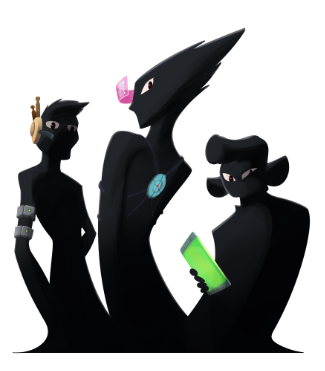
Thanks to having originated in a different continent entirely, Kastina as a country has a vastly different appreciation for Khen-Rho than the thirty seven nations of the Rhonum League. This is due to a number of reasons, not the least of which is that while Rhonum stumbled upon Khen-Rho early in their history, Kastina happened to have landed nonsupernatural scientific advances that were pursued in place of Khen-Rho. That, coupled with Kastina having a history of frequent existential threats, forced them to develop a lot of social issues that became ingrained into the culture ‐‐ in particular, an attitude of disdain against Khen-Rho as a primitive, barbaric alternative to their own sleek, superior technologies.
Many in Kastina take ethical issues with what has become normal to their counterpart. They're not fans of a system that stockpiles power through a tax of its own people's blood. How does this benefit the citizens in exchange? And what kind of backwards thinker agrees to sacrifice a person to stop an avalanche when they could raise an ionized plasma force field anyway?
The Kastinian stigma notably does not apply to Nebu-Khen, which the nation has attempted to study (with little success). In addition to not relying on the taking of people's blood, there is a persisting, elitist belief that the survival of hardship required to have produced a crutch implies the individual pulled themselves up through grit and determination, which fits well into the narrative of traditional Kastinian values.
Kastina and Rhonum's philosophies are not inherently incompatible, but between millenia of cultural traditions, standard-fare government corruption, and at least a few centuries' worth of on and off wars, finding that common ground has proved difficult.